3 Strategies to Improve the Deep Squat
Lately, I have overheard several individuals at the gym discussing their troubles with deep squatting: ranging from anterior hip pain, to knees caving in. Yes, I was eavesdropping, but kept my two cents to myself and decided to share it in this blog instead! There are 3 things I have found to hinder one’s deep squat potential: improper breathing strategies, not spending enough time in the “hole,” and lack of bodyweight exercises with the hips flexed greater than 90 degrees.
Breathing for Lifting
Stabilizing the low back is often the missing element for many heavy gym lifters. Training it is challenging and seems counterproductive early on. Our society has perfected the concept of “if I want it now, I get in now,” but when it comes to health and performance this is hardly the case. Proper breathing was the first step, as newborns, we established in order to achieve proper motion throughout all joints of our bodies. Efficient breathing is one of the hardest concepts for many people to achieve due to the dynamics of our society (i.e. sitting all day). Belly breathing helps with a vast amount of health conditions, not just proper positioning for the deep squat. It neurologically turns on and off the right muscles for breathing along with stabilization of the core. This then allows for full expression of our primary muscles to create movement. Many individuals quickly realize potential performance gains with improved breathing mechanics, which should be practiced every day, no excuses.
Deep Belly Breathing Exercise
Begin with hips and knees bent to 90 degrees as seen in the pictures below. Maintain a long spine from the low back to the base of the head. Do not let your head tip backward, which allows your chin to jut forward. Place one hand on the belly and one hand on the chest. You should be able to breathe deeply into the belly without the chest rising. If you look at a 3-6 month old baby, you will see them breathing in this position naturally. Also, observe in the picture below, the similarities to the squat position: neutral spine with hips and knees flexed proportionally. Picture 1 demonstrates the starting position with the belly relaxed and no air in the lungs. Picture 2 shows an inflated belly, i; during inspiration, the diaphragm and lungs push air downward, creating a rounded stomach appearance.
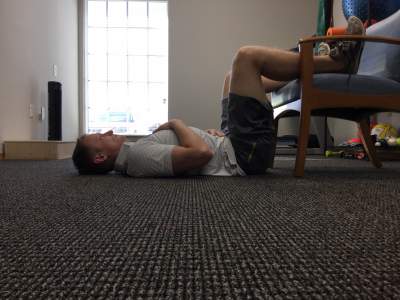
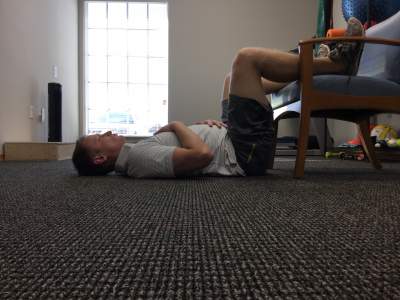
Not enough time in the “hole”
The “hole” refers to the deepest position maintained in a squat without pain and with good low back and pelvic alignment. Unfortunately, many gym goers do not spend the necessary time practicing and relaxing in this position without additional weight applied. Watch a toddler; they deep squat better than the majority of adults in this country. They are extremely mobile because they are always challenging themselves to develop their movement capabilities. Ask yourself, when was the last time you held a deep squat position more than 30 seconds in the last 5 years? To improve your deep squat, you must spend time in a deep squat! Just like the toddler, first spend time learning how to efficiently belly breathe and then create body movement around that proper breathing. If you are someone who feels uncomfortable in a deep squat, try the goblet squat (depicted below). It is great for helping create balance in a deep squat position. You can utilize kettlebells, dumbbells, or even stand in a doorway, holding onto the frame for support. Goblet squats allow a neutral spine position due to the added weight being in front of your body. If you feel sharp pain in this position, rise up a couple of inches to identify if this helps. If rising a few inches does not relieve the pain, seek medical or professional advice.
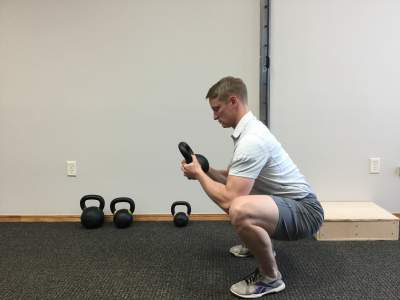
Lack of body weight exercises
Once our thighs pass below parallel to the ground, the function of our hip muscles changes; outward rotators of the legs become inward rotators. To thoroughly challenge the hip musculature, exercises with the thighs past or equal to parallel should be incorporated regularly into workouts.
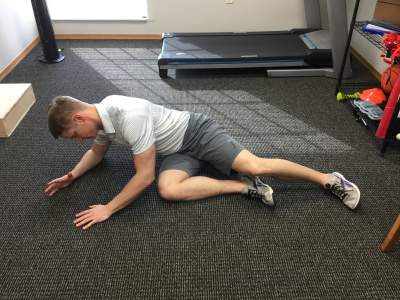
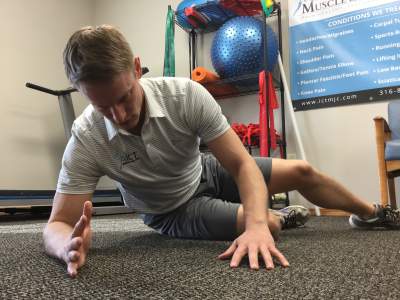
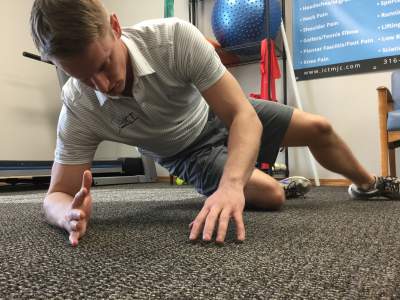
Practice the exercise above with these things in mind: establish breathing low into the pelvis first, maintain neutral spine (from low back to back of head (Picture 1)), apply pressure directly into the ground at the outside knee to raise the hip off the ground (Picture 2 to Picture 3). This exercise rotates the leg outward in relation to the body, while activating the same muscles used in a deep squat position on the downside leg. If done properly, it is much more challenging than you think, I promise! There should be little to no pressure into the ground from the top side arm and top side leg.
For joint health, muscle health, and full body functionality, the brain needs to be challenged in many positions to improve upon physical goals. Often I find these 3 key strategies are neglected, however incorporating them into your workout regime can bring huge improvements in pain reduction, joint health, and performance goals.
About the author
Dr. Keith Sparks is an award-winning chiropractor, functional medicine expert, and the co-founder of ICT Muscle & Joint Clinic. Dr. Sparks’ emphasis of care originated within the fields of rehabilitation, soft-tissue therapies, and chiropractic. To date, he has brought this unique combination of skills into union with functional medicine. The sole purpose of intertwining these distinct skills, knowledge, and services is to provide incomparable care to his local community. Dr. Keith Sparks is often seen in the Wichita, KS community speaking at business events and teaching health and performance classes.
